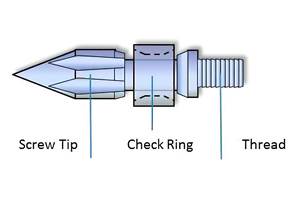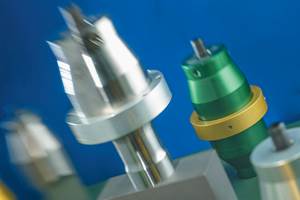Why I Still Like Analog Meters
They may not look as slick as their digital cousins, but I find them more helpful in identifying and troubleshooting extrusion problems.
A processor recently sent me a video of a control panel from an extruder that was surging badly, asking me to diagnose the problem. The digital meters were a blur of flashing numbers, and after reviewing the video several times I could not detect any discernible pattern. This reminded me of what I consider a step backward in modern extruder control systems: the use of digital meters for amps, pressure, and screw speed on the extruder and melt pump.
In the “old days,” many extrusion problems could be clarified using analog meters. By comparing the easily interpreted movement of the dial indicator, you could troubleshoot problems such as surging, feed restrictions, poor temperature profiles, melt-pump-related instability and even external inconsistencies. For example, by merely observing the ammeter and head pressure you could troubleshoot melt-channel plugging, poor feeding, and lack of fill. Even unmelt can sometimes be detected on an analog pressure meter located at the end of the barrel.
A plugging surge will show a very rapid amp fluctuation, but a steady head pressure. A feeding surge will show a proportional change in both, but with a time delay as the surge passes through the extruder. A lack of fill in the metering section will show a rhythmic surge with no change in amps. A screw-speed surge when tied to a melt pump can often be diagnosed by observing the suction pressure and screw-speed rhythm. By timing the movement of the analog meter, instability issues can sometimes be tied to things that affect performance but are not even present on the extruder.
With just the help of a stopwatch, factors such as the sequence and influence of hopper loaders, dryers, crammers, stuffers, feeders, regrind variation, and even changing environmental issues in the plant could be investigated with the analog meters.
The digital meters often move so fast that it’s difficult—in some cases impossible—to determine a pattern in the blur of numbers. And different instruments have different update times, making it difficult to compare the time sequence. Analog meters are powered by the function being measured so they act directly and in the same time sequence.
It’s understandable why machine builders now opt for digital meters. They are more compact, more accurate, more adaptable to data collection, and look much more sophisticated. And of course the OEMs do not have to run the extruders.
But the digital meters have actually decreased the ability of the process engineer or operator to diagnose process problems at the extruder. Controls for any process should be designed for optimum utility in operating the process, and not for appearance or remote interpretation of the extruder’s operation. If secondary data issues are important for other reasons, they can be duplicated by redundant meters.
New extruders will generally have digital meters unless you specify otherwise. Ask an experienced extrusion person what kind of meters they like for troubleshooting.
About the Author
Jim Frankland is a mechanical engineer who has been involved in all types of extrusion processing for more than 40 years. He is now president of Frankland Plastics Consulting, LLC. Contact jim.frankland@comcast.net or (724)651-9196
Related Content
Got Streaks or Black Specs? Here’s How to Find and Fix Them
Determining the source of streaking or contamination in your molded parts is a critical step in perfecting your purging procedures ultimately saving you time and money.
Read MoreICYMI: January Roundup
In case you missed it, here’s a short recap of the articles that our readers are taking note of.
Read MoreUltrasonic Welding: Tips, Techniques, and Troubleshooting
In this collection of content, we provide expert advice on welding from some of the leading authorities in the field, with tips on such matters as controls, as well as insights on how to solve common problems in welding.
Read MoreShredding Thin Film: How to Do It Right
While many processors recoil at this task, a little know-how in shredding equipment, processing, and maintenance should add the necessary confidence.
Read MoreRead Next
See Recyclers Close the Loop on Trade Show Production Scrap at NPE2024
A collaboration between show organizer PLASTICS, recycler CPR and size reduction experts WEIMA and Conair recovered and recycled all production scrap at NPE2024.
Read MoreBeyond Prototypes: 8 Ways the Plastics Industry Is Using 3D Printing
Plastics processors are finding applications for 3D printing around the plant and across the supply chain. Here are 8 examples to look for at NPE2024.
Read More.jpg;width=70;height=70;mode=crop)










